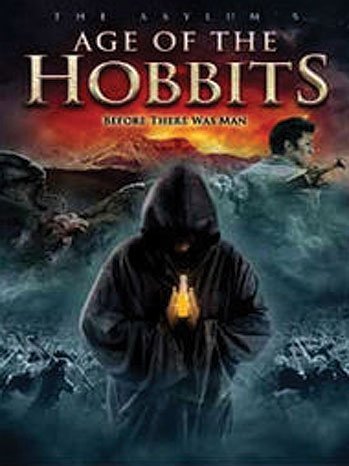More Hobbits
 We’ve earlier written about both Hobbits and the genre of “mockbusters”–movies that look and sound a lot like another famous (or likely to be successful) film. For the most part these mockbusters, many made by an outfit called The Asylum, have been released despite the angst Hollywood studios had over titles such as American Warships and Transmorphers: Battle of Man.
We’ve earlier written about both Hobbits and the genre of “mockbusters”–movies that look and sound a lot like another famous (or likely to be successful) film. For the most part these mockbusters, many made by an outfit called The Asylum, have been released despite the angst Hollywood studios had over titles such as American Warships and Transmorphers: Battle of Man.
But recently, the legal tide turned. Warner Bros, New Line and MGM sued The Asylum on the grounds that its mockbuster Age of the Hobbits infringed on their trademarks in the forthcoming Peter Jackson film The Hobbit: An Unexpected Journey. A California judge agreed. As the Hollywood Reporter explains,
The Asylum is known for its low-budget films that often trade on the hoopla surrounding major Hollywood releases. Past films from the company include 2012 Doomsday, Transmorphers: Fall of Man, Battle of Los Angeles and American Warships — which originally was titled American Battleship until Universal sued to have it changed shortly after that studio’s Battleship hit theaters. The movies have gotten underneath Hollywood’s skin over the years, but thanks in part to a 1993 court ruling over a rip-off of Disney’s Aladdin, many believed there wasn’t much legal recourse.
Age of the Hobbits was scheduled to be released Tuesday; The Hobbit hits theaters Friday.
In his decision, Gutierrez pointed to a trademark registration from the plaintiffs on “Hobbit,” covering “printed matter, namely posters, art prints, postcards” and says that it covers Asylum’s use of the term in its posters promoting its own movie. The word “Hobbit,” however, isn’t covered in any trademark registration as a movie title, leading the judge to consider whether the mark is distinctive and has developed a secondary meaning in the marketplace.
The judge was impressed with the evidence of consumer association on “Hobbit,” including a survey conducted by plaintiffs of randomly selected respondents. “The survey results showing that nearly 50 percent of respondents associated the term ‘Hobbit’ with the trademark holder is thus persuasive evidence that the Hobbit Marks have acquired secondary meaning,” he wrote.
After determining that, Gutierrez moved on to the issue of likelihood of confusion. The Hobbit’s makers can’t claim exclusive rights to fantastical images of swords, mythical creatures and the like, but the judge saw the imagery in the posters in connection with the use of the term “Hobbit” and said that “one is immediately struck by the similarity.” Even the slight difference in titles isn’t enough to avoid confusion, he added.
As for Asylum’s contention that “Hobbit” is separate from the J.R.R. Tolkien universe, the judge didn’t buy it.
“Asylum’s argument appears to ignore the connection between the term used to describe Homo Floresiensis and Tolkien’s hobbits,” the judge writes. “Asylum treats the use of the two terms as completely unrelated, but the terms are in fact closely related: Scientists gave Homo Floresiensis the nickname ‘Hobbit’ because its appearance resembled Tolkien’s hobbits, as described in his novels. … Given that Homo Floresiensis received the nickname ‘Hobbit’ specifically because of its resemblance to Tolkien’s fictional hobbits, the Court finds Asylum’s argument that its movie is wholly unrelated to Tolkien’s work because it is about Homo Floresiensis to be disingenuous.”



